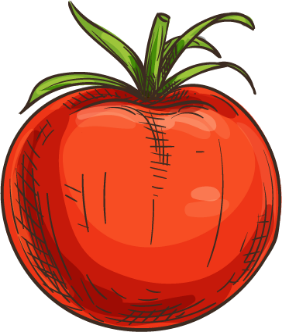Marketing
Marketing your school food program is paramount to reaching and maintaining your district’s wellness goals. Plus, properly communicating current and future improvements will improve visibility and educate the community. Marketing is also your greatest tool for increasing ADP—average daily participation—and growing your school meal program.
When you share info about new menu items, vegetables planted in the school garden, local farmers that you support, or new cafeteria events, you are not only providing the community with news, you are also encouraging them to get involved—whether that’s reinforcing the message at home, or actually taking on a participatory role.
This section of the site explores how to develop a brand for you program and how to use marketing to engage not only your students but the entire school community, including parents.
Branding Your Program
The most successful school lunch programs are supported through effective marketing and education programs that connect food with developing healthy lifestyles, nutrition education, agriculture, and cooking.
Branding Your Program
The most successful school lunch programs are supported through effective marketing and education programs that connect food with developing healthy lifestyles, nutrition education, agriculture, and cooking.
District Communications
So you have a brand (and a logo) in place, now what? First, you’ll want to include the brand on all of your own marketing materials. Then, explore all of the other district communications in which your program could be promoted. Here are some good places to start.
District Communications
So you have a brand (and a logo) in place, now what? First, you’ll want to include the brand on all of your own marketing materials. Then, explore all of the other district communications in which your program could be promoted. Here are some good places to start.
Social Media Toolkit
Social media is a highly effective tool for growing public awareness and engagement in your program. Facebook, Twitter, and Instagram allow district food service programs to stay connected to multiple stakeholders and audiences on a consistent basis. We’ve compiled a toolkit to help you build a social media plan and develop engaging content.
Social Media Toolkit
Social media is a highly effective tool for growing public awareness and engagement in your program. Facebook, Twitter, and Instagram allow district food service programs to stay connected to multiple stakeholders and audiences on a consistent basis. We’ve compiled a toolkit to help you build a social media plan and develop engaging content.
Partnerships
Funding and partnerships can help market your department and programs. Grant opportunities for marketing and educating the community are becoming more and more prevalent in the K–12 arena.
Partnerships
Funding and partnerships can help market your department and programs. Grant opportunities for marketing and educating the community are becoming more and more prevalent in the K–12 arena.
Posters & Signs
The cafeteria isn’t just a place where kids eat, it’s also a learning environment where you can visually reinforce the healthy food messaging through menus, activities, and events. Visual food education in the cafeteria can take on many forms—from posters depicting appropriate portion sizes to signs about salad bar etiquette.
Posters & Signs
The cafeteria isn’t just a place where kids eat, it’s also a learning environment where you can visually reinforce the healthy food messaging through menus, activities, and events. Visual food education in the cafeteria can take on many forms—from posters depicting appropriate portion sizes to signs about salad bar etiquette.






